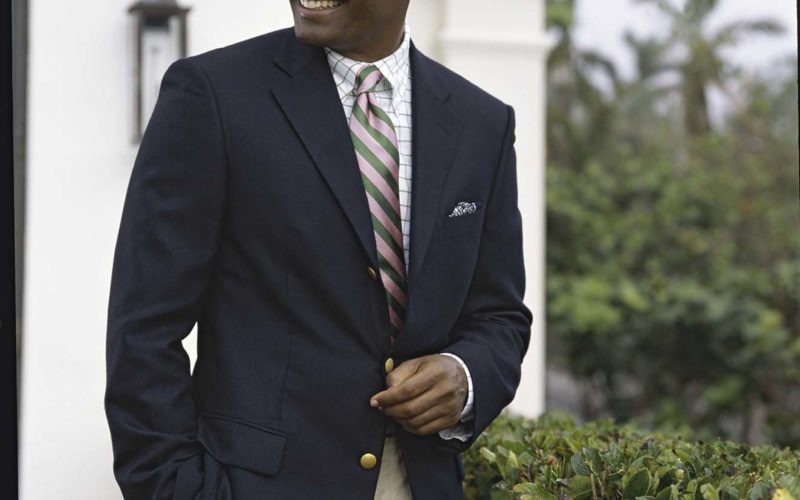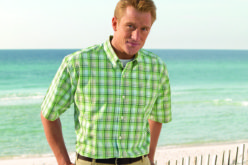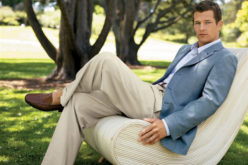Q. You wrote about blazers last week, and it made me realize I need to buy one or two. Unless it is a casual setting, I almost always wear suits. This is partly because I don’t know what to wear with a blazer. I’m even confused with the one I have, which as you suggested is the classic navy one. What is appropriate?
A. Style icons the world over display their sartorial skills with how they mix and match their blazer choices. The simple definition of a blazer is a stand-alone jacket worn with unmatched trousers. It is perhaps the single most versatile and useful garment a man can own. A well-cut navy blazer, in particular, is an essential part of any well-dressed man’s wardrobe. As with a suit, the first consideration for a fine complete look is the jacket itself – its cut, fabric, and color/pattern; but how good a blazer looks also depends a great deal on what you wear it with and your choice of accessories.
Blazers, like the diamonds of your closets that they are, come with 4 c’s to consider:
Cut: Single-breasted with one to three buttons (most often two) and with notch lapels, or double-breasted with four or six buttons and peak lapels.
Color: Navy is the classic. Although blazers do come in other colors, such as black, camel, and gray, I really think of the lighter colors as sports coats rather than a blazer.
Cloth and pattern: Historically, yachting blazers may come in strange bold stripes, but for our purposes here, we are only discussing solid navy wool and/or cashmere cloth. Most of this same information applies to black blazers. Patterned fabrics and lighter colors are more for sports coats.
Closings = BUTTONS: (It wasn’t easy to make this a 4th C!). The buttons on a blazer are usually different from standard suit buttons. They are most often contrasting brass with embossed anchors on them. But they may also be silver, pewter, navy suit buttons, or, my summertime favorite, white mother-of-pearl.
As for the complete outfit: You can dress it up or down. The classic navy blazer allows for hundreds of possible combinations. With a dash of knowledge and a sprinkling of personality, you can make it express a variety of attitudes, from English elegance, through Ivy League/preppy, to very current fashion-forward and sharp. That is a great part of the beauty of the navy blazer: you can change its personality in so many ways. Even so, as with all clothing, you look best in certain fabrics, colors, and patterns. Know what suits you.
TROUSERS
This is an important rule. A blazer is not a suit coat, pair it with trousers that are not the same color. A navy blue blazer does not work with navy trousers, and with black it looks like a police uniform. Instead, choose trousers with some contrast, that are in harmony with the blazer.
The most timeless, classic, and dressy pants to wear with a navy blazer are gray in either wool flannel or a lighter fabric, depending on the season. Any shade of gray works from the darkest charcoal to very light pearl gray. Darker shades are the dressiest. And the next step lighter than pearl gray, white, can be off-white wool or, for a summer party, perhaps white jeans.
Well-pressed khakis are a popular all-American look, the quintessential partner to the navy blue blazer. Everyone wears them from the Southern gentleman to the entry level employee as well as the college professor and all of his students. They give a slightly casual, “but still put together,” look. Khakis vary in dressiness depending on the fabric, but they are always more casual than gray trousers.
SHIRTS
Here is where you have the most opportunity to express your personal style. With a navy blazer, you can choose shirts that are quietly traditional or suavely fashionable. Everything from a French cuff white broadcloth dress shirt, through a blue Oxford cloth stripe with button cuffs, to a casual plaid button-down can make a good combination.
Even some knits will also work. Colorful knit polo shirts, as long as they are in pristine condition, can go with a blazer. Forget T-shirts; a blazer needs a shirt with a collar.
ACCESSORIES:
TIES
A blazer can be paired with all types of neckties from the dressiest small white polka dot on a dark background to a classic repp stripe, foulard, paisley, check, or a solid. It can even work with a bow tie. And, as long as the blazer is single-breasted, it also works perfectly without a tie.
POCKET SQUARES
You can go the next step and tuck a patterned silk or cotton pocket square into your breast pocket; it helps break up the solidity of the navy blazer. (NOTE: Never exactly match the patterns of the pocket square and the tie for what I refer to as a tacky, dressed “out of a kit” look.) For a safe look, a white linen handkerchief is always right and will never go out of style.
JEWELRY
Tie bars/clasps have returned as an option. Just as with pocket squares, they are not essential, but they can add a distinctive touch to a man’s combination. They are purely an item of personal preference; if you like them, wear one.
By the way, if you are wearing the jacket for video conferencing, and sitting before a camera, ensure that the tails fall behind your chair and they are not pushed up making the shoulders ride above your body. Decades back in Broadcast News, William Hurt explained to Albert Brooks “sit on your jacket tails” to look good on camera . . . now we’re all on camera.
Please send your men’s dress and grooming questions to MALE CALL: Lois.Fenton@prodigy.net









